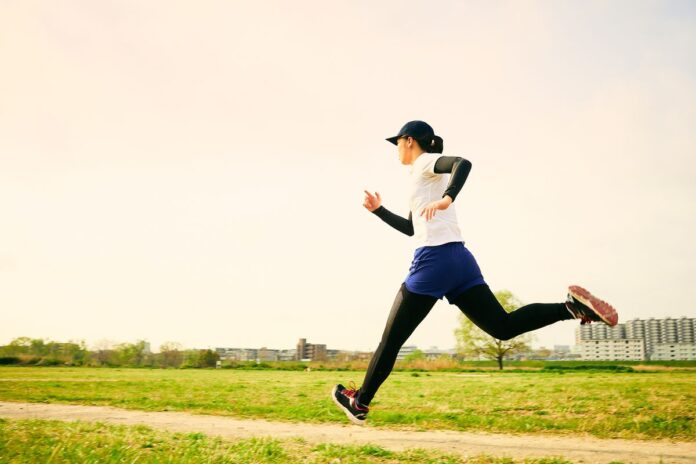Running is a natural human activity practiced for thousands of years. However, understanding the biomechanics behind running and analyzing gait patterns has become vital to improving performance, preventing injuries, and enhancing the overall running experience. In this article, we will delve into the science of running mechanics and gait analysis, exploring how these fields contribute to optimizing running form and maximizing efficiency.
Understanding Running Mechanics:
Running mechanics refers to the complex movements and interactions between various body parts during the running stride. It involves coordinating muscles, joints, tendons, and ligaments to produce efficient and powerful forward motion. Proper running mechanics can help minimize energy wastage, reduce joint stress, and enhance the running economy.
The main components of running mechanics include posture, stride length, cadence, foot strike, and arm swing. Let’s explore each of these elements in detail:
1- Posture: Maintaining a good posture while running is crucial for efficient movement. This involves keeping the head up, shoulders relaxed, and spine aligned. Proper posture helps optimize breathing, balance, and alignment of the body.
2- Stride Length: Stride length refers to the distance covered by a single step. While it may vary among individuals, an optimal stride length allows for effective energy transfer and forward propulsion. Striking a balance between stride length and cadence is key to achieving efficient running mechanics.
3- Cadence: Cadence refers to the number of steps taken per minute. It plays a significant role in running efficiency and injury prevention. Research suggests that a cadence of around 180 steps per minute is optimal for most runners, as it reduces overstriding and excessive vertical oscillation.
4- Foot Strike: Foot strike refers to the part of the foot that first contacts the ground during running. There are three main types: heel strike, midfoot strike, and forefoot strike. Each foot strike pattern has advantages and considerations, and understanding which works best for an individual can help optimize running mechanics and reduce the risk of injury.
5- Arm Swing: The arm swing counterbalances leg movements during running. Proper arm swing mechanics aid in maintaining balance, generating momentum, and facilitating an efficient stride. Arms should swing naturally and relaxed, moving in sync with the opposite leg.
Gait Analysis:
Gait analysis systematically evaluates an individual’s running mechanics, typically through video recordings, motion sensors, or specialized equipment. It provides valuable insights into the kinematics and kinetics of running, allowing experts to identify strengths, weaknesses, and areas for improvement.
There are two main types of gait analysis: visual gait analysis and instrumented gait analysis. Visual gait analysis is conducted by trained professionals who observe and analyze a runner’s form, looking for any irregularities or biomechanical issues. Instrumented gait analysis utilizes motion capture systems, force plates, and pressure sensors to provide more precise and quantitative data on running mechanics.
Benefits of Running Mechanics and Gait Analysis:
1- Injury Prevention: By analyzing running mechanics, gait analysis can identify any imbalances, weaknesses, or faulty movement patterns that may contribute to injuries. With this knowledge, targeted interventions and corrective exercises can be prescribed to address these issues and reduce the risk of running-related injuries.
2- Performance Enhancement: Optimizing running mechanics can improve running economy, speed, and endurance. Gait analysis helps identify areas of inefficiency, allowing runners to make necessary adjustments to enhance their performance.
3- Personalized Training Programs: By understanding an individual’s unique running mechanics, coaches and trainers can develop customized training programs to improve specific running form aspects. This personalized approach can lead to more effective training and better results, as it addresses each runner’s specific needs and areas for improvement.
4- Rehabilitation and Return to Running: Gait analysis is a valuable tool in the rehabilitation process for runners recovering from injuries. It helps identify compensatory movements or altered mechanics that may hinder recovery. By addressing these issues through targeted exercises and adjustments to running form, gait analysis aids in a safe and effective return to running.
5- Equipment and Footwear Selection: Running mechanics and gait analysis can guide individuals in selecting the appropriate footwear and equipment. By analyzing factors such as foot strike pattern and pronation, experts can recommend shoes with the proper support and cushioning to optimize comfort and reduce the risk of injury.
Conclusion:
The science of running mechanics and gait analysis offers valuable insights into the intricate movements and biomechanics involved in running. By understanding and analyzing these aspects, runners can optimize their form, improve performance, and reduce the risk of injuries.
Whether you’re a recreational runner or an elite athlete, considering a gait analysis and understanding your running mechanics can significantly impact your overall running experience.
Consult with a running specialist or sports professional for a comprehensive gait analysis and gain valuable insights into your unique running mechanics.
By harnessing the power of science, you can unlock your full running potential and enjoy the countless benefits of efficient and biomechanically sound running.
Read Also
- The Future of Men’s Health: Why Telehealth Is Here to StayTelehealth isn’t just a pandemic trend that faded into the background. For Australian men, it has become one of the most practical, time-saving, and stress-free ways to manage everyday health — and it’s shaping the future of how we access care. Platforms like DOCTO, an Australian online doctor and specialist telehealth service, are leading the… Read more: The Future of Men’s Health: Why Telehealth Is Here to Stay
- How to Build a Simple, Clean Skincare Routine ?You don’t need a complicated skincare routine. It doesn’t have to be something that requires twenty different products and confusing steps. Your routine works well with just a few high-quality clean ingredients. The beauty industry keeps pushing more products, but your skin actually needs less. You only need a simple approach to get better results… Read more: How to Build a Simple, Clean Skincare Routine ?
- How Preventive Dental Care Supports Overall HealthHave you ever wondered how a simple dental checkup could impact your entire body? Oral health is more than just a bright smile. Studies show that poor dental habits can contribute to serious health problems. Gum disease and tooth decay are linked to heart disease, diabetes, and infections. Yet, many people overlook preventive dental care.… Read more: How Preventive Dental Care Supports Overall Health
- Seeing Clearly in a High-Tech World: A Deep Dive into Advanced Vision Care ServicesProtecting your eyesight isn’t optional—it’s essential. Modern eye care has evolved far beyond basic exams, offering advanced diagnostics, personalized treatments, and surgical innovations that keep vision sharp for life. A leading example is Intermountain Eye Center, home to specialists like Dr Fishburn Boise, where patients receive comprehensive, high-level vision care designed to preserve long-term eye… Read more: Seeing Clearly in a High-Tech World: A Deep Dive into Advanced Vision Care Services
- Why the Keto Diet Works for Some People—and Fails Dramatically for Others: An Ayurvedic Breakdown for Modern HealthcareThe keto diet has dominated weight-loss culture for years. For some people, it produces rapid fat loss, stable energy, and improved mental clarity. For others—especially those who gain weight easily—it leads to burnout, digestive distress, rebound weight gain, high cholesterol, and a metabolism that feels slower than before. Healthcare often frames this as a discipline… Read more: Why the Keto Diet Works for Some People—and Fails Dramatically for Others: An Ayurvedic Breakdown for Modern Healthcare
- How to Choose the Best Assisted Living Facility for SeniorsAre you looking for the right assisted living facility for a senior loved one? Choosing a place can feel overwhelming. There are many factors to consider, from care services to the environment. Safety, comfort, and social opportunities play important roles in daily life. Each senior has unique needs and preferences that must be met. Understanding… Read more: How to Choose the Best Assisted Living Facility for Seniors







